German walking tour No. 1 - The German settlement on Vasilevsky Island
Vasilyevsky Island was the area where the first Germans who came to St. Petersburg on the invitation of Peter the Great settled. Here they worked for generations as architects and engineers, scientists and teachers, doctors and craftsmen, and here they were buried. The Russian writer, Nikolay Leskov, even has a story called The Islanders, about German life on Vasilyevsky Island.
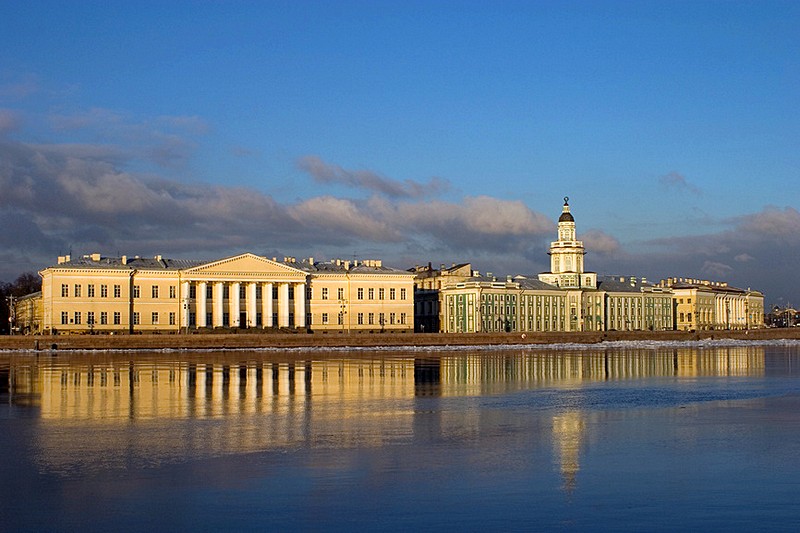
Our walk begins on the Spit of Vasilyevsky Island, the main historic square on the island. Universitetskaya Naberezhnaya (University Embankment) runs along the river from here, and the first building is the Zoology Museum, the founder of which and the director for 50 years was the Saxon doctor and naturalist Johann Friedrich von Brandt. It is the first of a series of buildings - the Kunstkammer (No. 3), the Academy of Sciences (No. 5), and St. Petersburg State University (No. 11) - where German scientists made a huge contribution over two centuries to the development of Russian science, technology, and academia. At No. 15 stands the beautiful, baroque Menshikov Palace, built for Prince Alexander Menshikov in part by the German architect Gottfried Johann Schadel. The building later became the premises of the First Cadet Corps, Russia's first military higher education institution, which in the 1780s had as its director the great German Romantic playwright Friedrich Maximilian von Klinger.
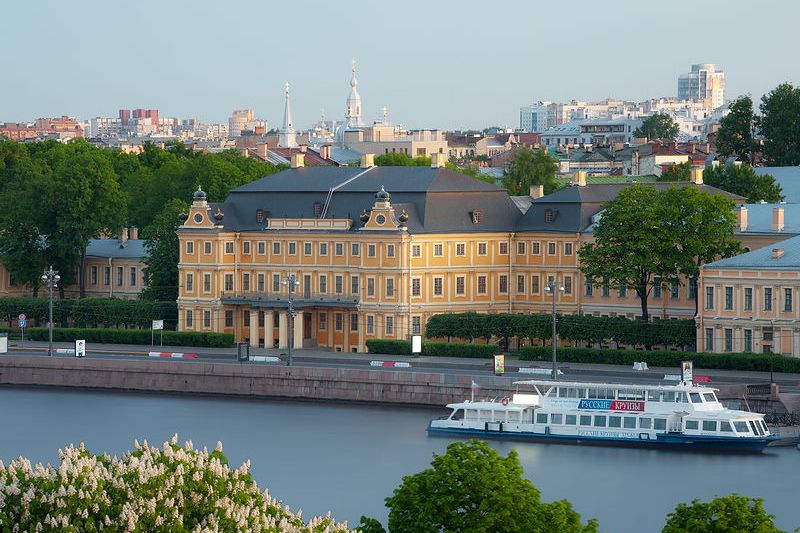
Past the Menshikov Palace, we turn right up 1-ya Liniya. About 400m up the street are two houses where the famous German entrepreneur and archaeologist Heinrich Schliemann, the discoverer of Troy, lived - in the 1840s (when he was an agent for a German trade firm) at No. 24, and in the late 1850s, when he had returned to Russia with a fortune made in the California Gold Rush, at No. 28. We head back towards the river and turn right onto Bolshoy Prospekt, the main avenue of Vasilyevsky Island. The first building we come to is the Lutheran Church of St. Catherine, a fine neoclassical edifice built by the great Russo-German architect Yury Felten for the German parishioners, who had established the first Lutheran church here in 1728.
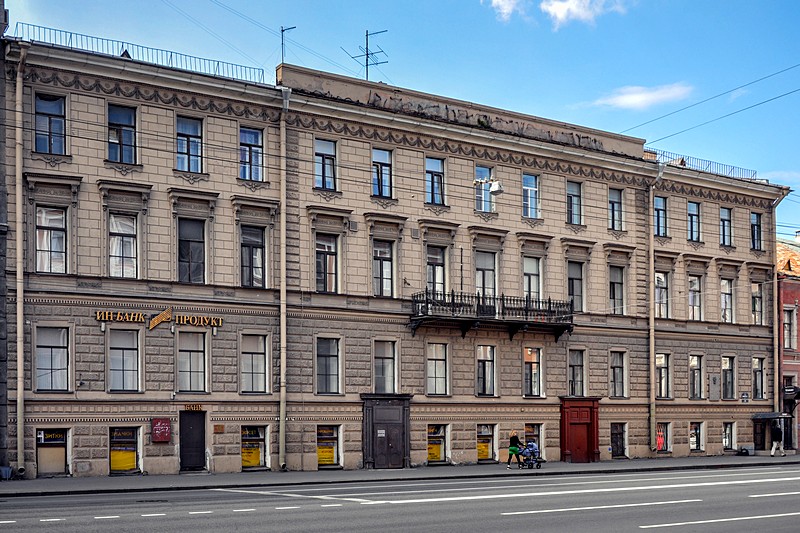
A little further on, at the corner of Bolshoy Prospekt and 5-ya Liniya, we can see the former building of the elite pre-Revolutionary school for girls founded in 1858 by Emilia Schaffe, a teacher from a local German family. The main building of the Gymnasium (now School No. 21) on 5-ya Liniya was designed by Karl Schmidt, son of a German engineer, in early Art Nouveau style. A little further down Bolshoy Prospekt, past the Andreevskiy Market, turn left onto 7-ya Liniya to see the Pharmacy of Alexander Poehl (No. 16, 7-ya Liniya). Poehl's father was a pharmacist from Brandenburg and, as well as continuing the family business (which supplied the Imperial Court with medicines), he pursued a distinguished academic career in Russia and Germany in various branches of chemistry. There is still a pharmacy on the premises, with beautifully restored interiors.
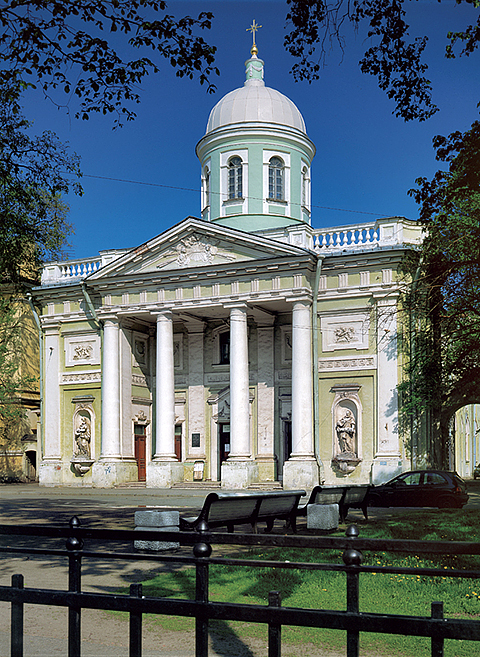
Continuing along Bolshoy Prospekt, we come to another work by Karl Scmidt on the left at No. 49-51. This impressive building in Russian "Brick Style" was constructed in 1897 as a maternity hospital, funded by German industrialists of the Lutheran Evangelical Parish. Turning to the right onto 13-ya Liniya, we can see another of Schmidt's works, the Lentsz Apartment Building at No. 16.
There is another German-built hospital on the next cross street (4/6, 15-ya Liniya). Founded in 1881 by a group of wealthy, philanthropic German citizens as a memorial to the recently assassinated Alexander II, the Alexandrovskaya Men's Hospital was designed by another architect of German origin, Hieronymus Kutner, and its trustees included the German ambassador and Grand Princess Olga Fyodorovna, daughter of Grand Duke Leopold of Baden. Like the maternity hospital, it offered many of its services free for the poor.
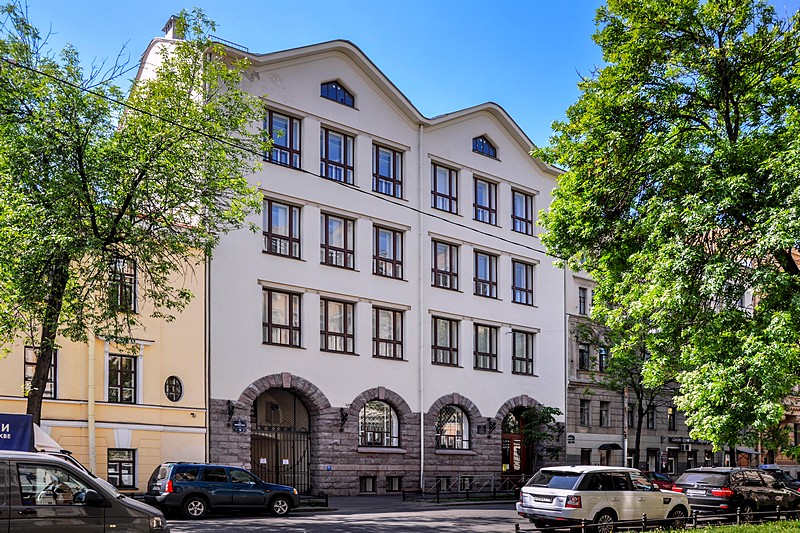
At the corner of Bolshoy Prospekt and 16-ya Liniya can be found one of the many works of the prolific late fin de siecle architect Wilhelm Schaub, also from a St. Petersburg German family, who was known by his contemporaries as "the poet of plaster". More of his apartment buildings, which were popular for their combination of quality and low prices, can be seen on 18-ya Liniya (No. 21-23) and 20-ya Liniya (No. 7). Also, on 21-ya Liniya at No. 8 is the mansion Schaub built for the Prussian Frank brothers.
Back on Bolshoy Prospekt, we turn back to 14-ya Liniya and turn left, heading up the street to No. 39, where another German pedagogue, Karl May, ran one of St. Petersburg's most famous schools. Among its illustrious old boys were the artists Valentin Serov, Nicholas Roerich and Alexander Benois, and the linguist and literary historian Dmitry Likhachov. The building is now home to the Institute of Information Technology and Automation, and a small museum honoring the school.
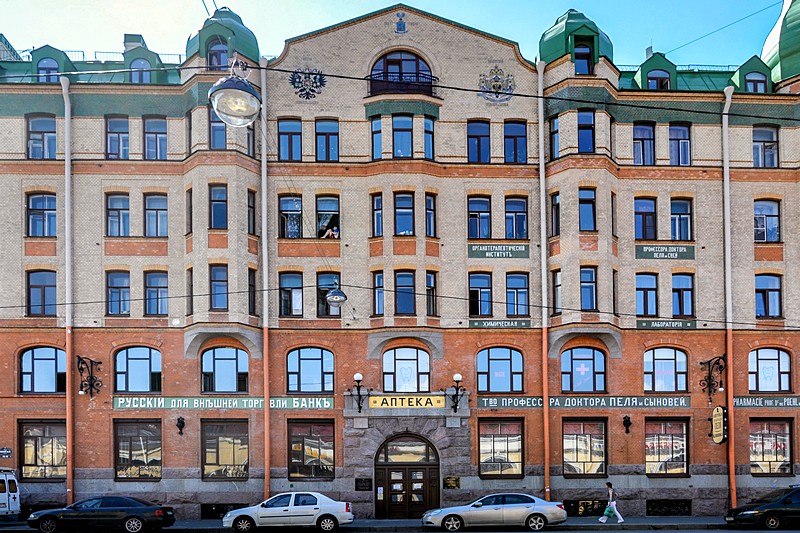
From there, we continue to the end of 14-ya Liniya and turn left onto Kamskaya Ulitsa, crossing the Smolenka River and coming into the Smolenskoye Lutheran Cemetery, which was the final resting place for the German community on Vasilyevsky Island, as well as many other protestant citizens of St. Petersburg. Among the worthies buried here are von Brandt, von Klinger, Schaub and May, already mentioned in the text, as well as the architect Victor Schroeter, the orientalist Wilhelm Barthold, the doctor Robert Wreden, the anthropologist Friedrich Wilhelm Radloff, and Georg Rheingold von Engelhardt, a Baltic German writer and teacher who was director of the Tsarskoye Selo Lycee when Alexander Pushkin was a pupil there. Sadly, the cemetery is chronic, though quite romantic, state of disrepair, and graves are not easily recognized. Here we finish our first German tour of St. Petersburg, which has only really skimmed the surface of the rich history of the city's German settlement on Vasilyevsky Island.

